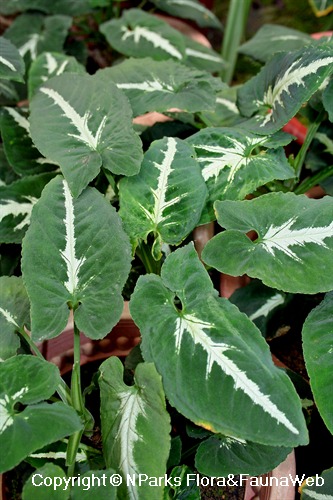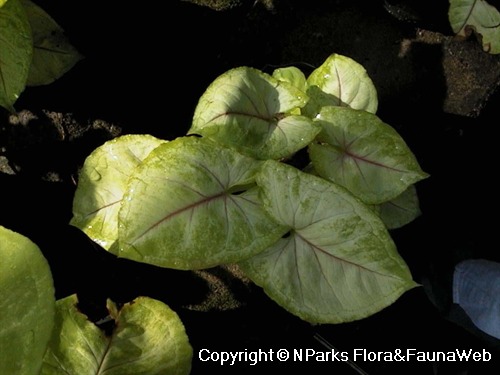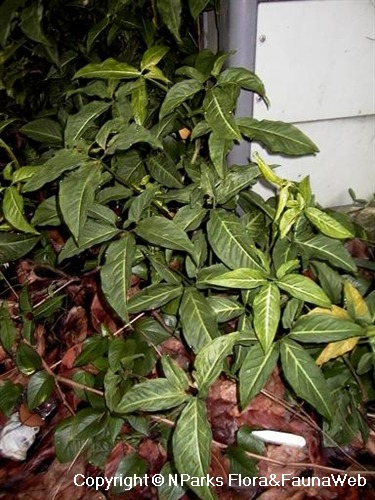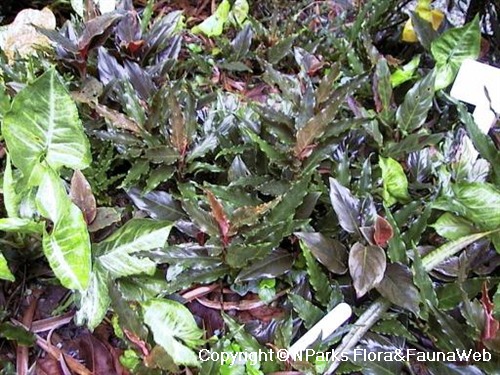
Name
Classifications and Characteristics
| Plant Division | Angiosperms (Flowering Seed Plants) (Monocotyledon) |
|---|---|
| Plant Growth Form | Climber, Epiphyte |
| Lifespan (in Singapore) | Perennial |
| Mode of Nutrition | Autotrophic |
Biogeography
| Native Distribution | Panama |
|---|---|
| Native Habitat | Terrestrial |
Description and Ethnobotany
| Growth Form | A hemiepiphytic vine, it climbs via means of adventitious roots and can also grow as a creeper. |
|---|---|
| Foliage | The leaves are arranged alternately along the stem and are elliptic to laceolate-elliptic in shape with a cordate base. The leaves are dark green with a red underside. The major lateral veins originate mostly from the leaf base. |
| Flowers | The flower inflorescence is in the form of a spadix and spathe. The spadix is recurved in fruit and can grow up to 9.5cm in length. The spathe is white with a green tube. |
| Habitat | It can be found growing in tropical moist forest from sea level to 350m in altitude. |
Landscaping Features
| Desirable Plant Features | Ornamental Foliage |
|---|---|
| Landscape Uses | Parks & Gardens, Flowerbed / Border |
| Thematic Landscaping | Naturalistic Garden |
Plant Care and Propagation
| Light Preference | Semi-Shade |
|---|---|
| Water Preference | Moderate Water |
| Rootzone Tolerance | Well-Drained Soils |
| Propagation Method | Stem Cutting |
Foliar
| Foliage Retention | Evergreen |
|---|---|
| Mature Foliage Colour(s) | Green, Red |
| Foliar Type | Simple / Unifoliate |
| Foliar Arrangement Along Stem | Alternate |
| Foliar Attachment to Stem | Petiolate |
| Foliar Shape(s) | Non-Palm Foliage |
| Foliar Venation | Reticulate |
| Foliar Margin | Entire |
Floral (Angiosperm)
| Flower & Plant Sexuality | Unisexual Flowers |
| Flower Grouping | Cluster / Inflorescence |
|---|---|
| Flower Location | Axillary |
| Inflorescence Type | Spathe & Spadix |
| Flowering Period | Rarely |
Image Repository
Others
| Master ID | 32064 |
|---|---|
| Species ID | 6469 |
| Flora Disclaimer | The information in this website has been compiled from reliable sources, such as reference works on medicinal plants. It is not a substitute for medical advice or treatment and NParks does not purport to provide any medical advice. Readers should always consult his/her physician before using or consuming a plant for medicinal purposes. |







